Popularity:
Style: Freeride
Level: Intermediate, Good, Specialist
Matala beach is located at the exit of a small valley, where there is formed a large enclosed bay overlooking the islands “Paksimadia” as the locals call it. In front of the bay there is a wonderful sandy beach 300 m length.
Matala was the ancient port of Phaistos and Gortys and a former fishing community which has developed into a modern holiday center. It is located 70 km from south west of Heraklion.
The most characteristic feature of the area, are the many caves carved in soft white stone thousands of years ago and located in the northwest of the beach. There are also several caves underwater. It is considered as certain that the caves of Matala beach were tombs of Roman and Christian Period. However, many of them have rooms, stairs, beds or windows. This is a fact that proves that the caves were used as accommodation in the prehistoric times.
In these caves of Matala beach in Crete, the hippies found their paradise in the 60s and 70s. At this period, there was absolutely nothing around, but the small fishing village of Pitsidia, so the sense of freedom was unlimited.
Medium Months:
Wind Type: Thermal Winds
Best Direction:
Main Direction:
Worst Direction:
Wind Factor:
Main Wind Direction:
Blowing at:
Wave Tack:
Thermal winds during summer period June, July and August. In summer time water 24°C, air 30°C. A lycra for sun protection is recommended. Spring/autumn you need a wetsuit. In winter time a long wetsuit.
Quality: Crystal Clear
Depth: Deep (deepens abruptly)
Seabed:
Attention: Reef
Crystal clear deep water. When wind blows from NorthWest, West and SouthWest direction, there are large and impressive waves in the beach (If it’s wavy, you have to be extra careful with your children). Matala it is one of just over 400 beaches in Greece that have been awarded a Blue Flag.
Size: Small
Bathers Period: June, July, August
Bathers: Much
Shade: No
Kid Friendly: Yes
Attention: Rocks
A safe natural harbor on the Bay of Messara, blessed with a gently sweeping sand and pebble beach, the place in legend where Zeus swam ashore in the guise of a bull with Europa on his back. Short (300 m long and 45 m wide), not much space, especially during summer months when tourists are around.
Half the beach is fringed by tamarisk trees, leading the eye on to impressive formations of sandstone rock cliffs with their famous caves sliding into the sea at an odd angle, creating one of the most unusual beachscapes on the island.
Also the beaches of Matala, Kommos and Red Beach come under Natura 2000, a European Union network of nature protection areas established to assure the long-term survival of Europe's most valuable and threatened species and habitats.
Arrival on Matala:
You can drive your car towards Phaistos archeological site and then follow the signs to Matala. The distance is 75 km. There is also a road from Mires Village (about 71 km). Regular public bus service links Matala with Tymbaki, Mires and Heraklion. Taxi service is also available.
Access to Crete:
Arrival by Airplane: Millions of visitors come to Crete every year from all over the world directly by plane, especially by charter. The three international airports on the island, in Heraklion, Chania and Sitia are linked to hundreds of other international airports. The largest low cost companies have regular flights to Crete and the most important international airlines organize charter flights. If you take your own equipment, it’s best to reserve this in advance.
Airport at Heraklion: It is the primary airport on the island of Crete and the country’s second busiest airport after Athens International Airport. It is located about 5 km east of the main city center of Heraklion, near the municipality of Nea Halicarnassus. It is a shared civil/military facility. The airport is named after Heraklion native Nikos Kazantzakis, a Greek writer and philosopher. Nikos Kazantzakis Airport is Crete’s main and busiest airport, serving Heraklion, Agios Nikolaos, Malia, Hersonissos, Stalida, Elounda and other resorts.
Airport at Chania: Located on the Northwestern part of the island, the airport is also known as the “K. Daskalogiannis” Airport. This international airport is situated near Souda Bay, on the peninsula of Akrotiri, serving the city of Chania (14 km away). Moreover, it is a gateway to western Crete for an increasing amount of tourists. It is a joint civil–military airport. It is much smaller and far less busy than Heraklion airport. The airport is connected with many countries (about 30) from Europe and Asia especially in summer season and with flights connections in Greece and Cyprus whole year.
A new public airport in Sitia: it is a small community airport in the region Bonda of Sitia Municipality, on the eastern part of Crete, located 1 km north/northwest of the city center. The facility is serving the city of Sitia, currently only with a small number of domestic flights, mainly to/from Athens International Airport Eleftherios Venizelos with an internal flight. The flight time from Athens to Sitia is 55 minutes. Also from Rhodes Island, with stops Karpathos and Kassos flight time and 120 minutes. Fly from Alexandroupolis during 105 minutes, from Preveza to over 100 minutes and from Heraklion during 25 minutes.
Inland airport at Kasteli: There are long term plans to replace Heraklion airport, which is too close to the city, by a new inland airport at Kasteli, southeast of Heraklion. It is a small airport located at the edge of Heraklion. It has basic facilities and a small parking lot.
Almost all scheduled international flights transit through Athens (which take about 45min) where you must take a scheduled domestic flight to Chania or Heraklion. These are quite frequent (around 6 to 8 times a day to Chania and more to Heraklion). During the months of July and August there are flights from Thessaloniki to Heraklion and Chania (they take about 90 minutes). The airport at Heraklion also has daily flights to Rhodes which takes 1 hour. From April till early November charter airlines fly directly to Heraklion and Chania from many European airports.
Arrival by Ferry/Boat: If you are already in Greece and specifically in Athens, you can continue your journey to Crete not only by plane but even by ferryboat from Piraeus. Athens airport offers good public transport connections to the city center as well as to the port of Piraeus. The three biggest ports of Crete, Heraklion, Rethymno and Chania have dozens of luxury ferry boats linking them with Greece’s largest port, Piraeus, on a daily basis. You can also go from Piraeus to Crete to Agios Nikolaos or Sitia Ports and from Thessaloniki to Heraklion.
The regular ferryboat service from the port of Piraeus to Heraklion and Chania is that ships depart every evening around 8.00 or 8.30 (times vary a little depending on the season) and arrive very early morning (generally between 5.00 or 6.00 am). Avoid weekends and especially the beginning and end of holidays. If you want a cabin it is often safer to book in advance.
Ferryboat from Peloponnese: South Peloponnese (Gythion, Neapolis or Kalamata) and Kythira Island is connecting to Kastelli/Kissamos (45 km west of Chania). Timetables are rather erratic (and very difficult to find) but it is an option if you want to spend time on the Peloponnese or simply avoid Athens.
Ferryboat from Cyclades and Dodecanese: From April to October you can also get boats from Cycladic Islands to Heraklion and Agios Nikolaos. There are daily catamarans (hydrofoils) to Santorini and the trip takes about 2,5 hours. Also Rhodes, Karpathos, Kasos and Milos from the ports of Sitia, Agios Nikolaos and Kissamos.
Since there are no roads along the southwest coast there is a ferry line with connections between Paleochora, Sougia, Agia Roumeli, Loutro and Hora Sfakion (Sfakia). There is also a connection with the islet of Gavdos, Europe's southernmost point (Cape Trypiti).
Ferryboat from Italy: Several shipping companies connect Italy (Trieste, Ancona, Bari, and Brindisi) with the mainland of Greece (Patras and Igoumenitsa). It is preferable to book your passage in advance in the summer season.
Arrival by Car, Moto, Camper Van: Be careful when driving in Crete; despite the fact that most roads (including the new National Highway) are full of twists and turns through mountains, Cretans usually drive aggressively, fast, and on the edge of safety. In rural and mountainous areas (which is almost everywhere), there can be goats, sheep, donkeys, and stray dogs on the roads.
Overland to Greece: Traveling to Greece overland has virtually stopped since the disintegration of former Yugoslavia. The alternative through Hungary, Romania and Bulgaria takes so long that it is not worth thinking about unless you want to visit these countries. The only option if you want to come by car or bike is by ferry from Italy.
For those who don’t have their own means of transport, there is of course always the possibility to rent a car or a camper which will allow you to explore the island on its modern network of roads. Taxi services are another way to get around Crete, but can be quite expensive.
Arrival by Bus: Most of the bus services are run by KTEL (around 200 intercity modern buses of all sizes) conducts hundreds of routes daily, thus linking the major cities of the island with all the settlements, but also with the rest of Greece within a framework of combined transportations. Public transportation is fairly frequent and timetables quite trustworthy. Bus drivers usually divert from their marked routes to enter little villages if asked to do so. Bus services along the north coast and towards the south coast are excellent, reliable, frequent and cheap.
Cretan bus stations are very simple for the most part, except for in Heraklion which has two major bus stations (one for buses going in town and one for KTEL run buses).
On foot: Although Crete is the largest of all Greek islands; you can get around on foot. Especially the countryside in the western part of Crete offers some rough country walking and there are good paths between Chania and Chora Sfakion. These go via forests with cypress, evergreen oak and cypress, various gorges and of course olive and orange groves. This part of Crete is good for walking holidays.
 Windsurf Lessons
Windsurf Lessons
 Windsurf Rental
Windsurf Rental
 Kitesurf Lessons
Kitesurf Lessons
 Kitesurf Rental
Kitesurf Rental
 Surf Lessons
Surf Lessons
 Surf Rental
Surf Rental
 SUP Rental
SUP Rental
 Storage
Storage
 Repair
Repair
 Washing
Washing
 Rescue
Rescue
Life guarding services, no rescue boat Equipment Store
Equipment Store
 Events
Events
 Parking
Parking
Parking areas close to the beach Toilet
Toilet
 Shower
Shower
 Beach facilities
Beach facilities
Umbrellas & Sunbeds Food
Food
The picturesque local taverns on the beach of Matala are ideal for romantic and carefree nights Market
Market
 Acommodations
Acommodations
Many hotels, rooms for rent and guest houses both in the village and a little farther into the valley Camping
Camping
 Nightlife
Nightlife
In the evenings, the bars on the beach are crowded Internet Access
Internet Access
 Medical Center
Medical Center
First Aid in Matala, Regional Clinics in Timbaki (15 km away), in Agia Galini (28 km away) & Health Center in Mires (15 km away) More Activities
More Activities
Watersports, Beach Volley matches, Horse Riding

.jpg)
.jpg)
.jpg)
.jpg)
.jpg)

.jpg)
.jpg)
.jpg)

.jpg)
.jpg)
.jpg)
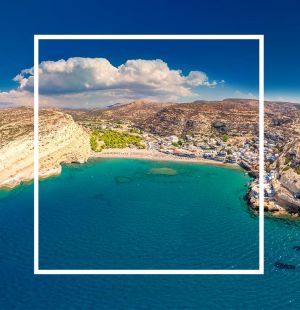
.jpg)
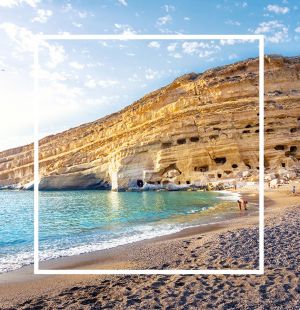
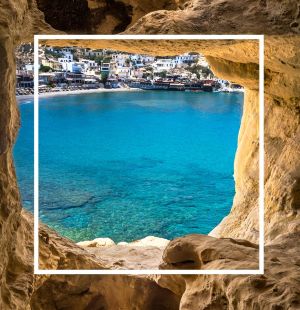
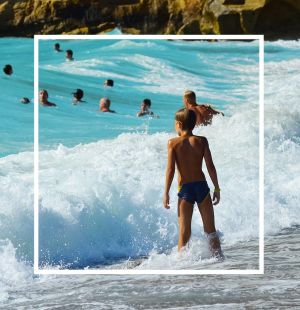
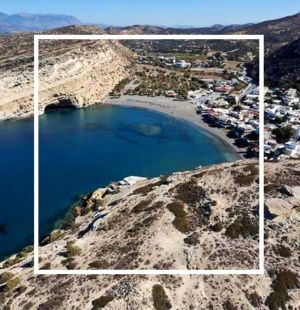
.jpg)
.jpg)